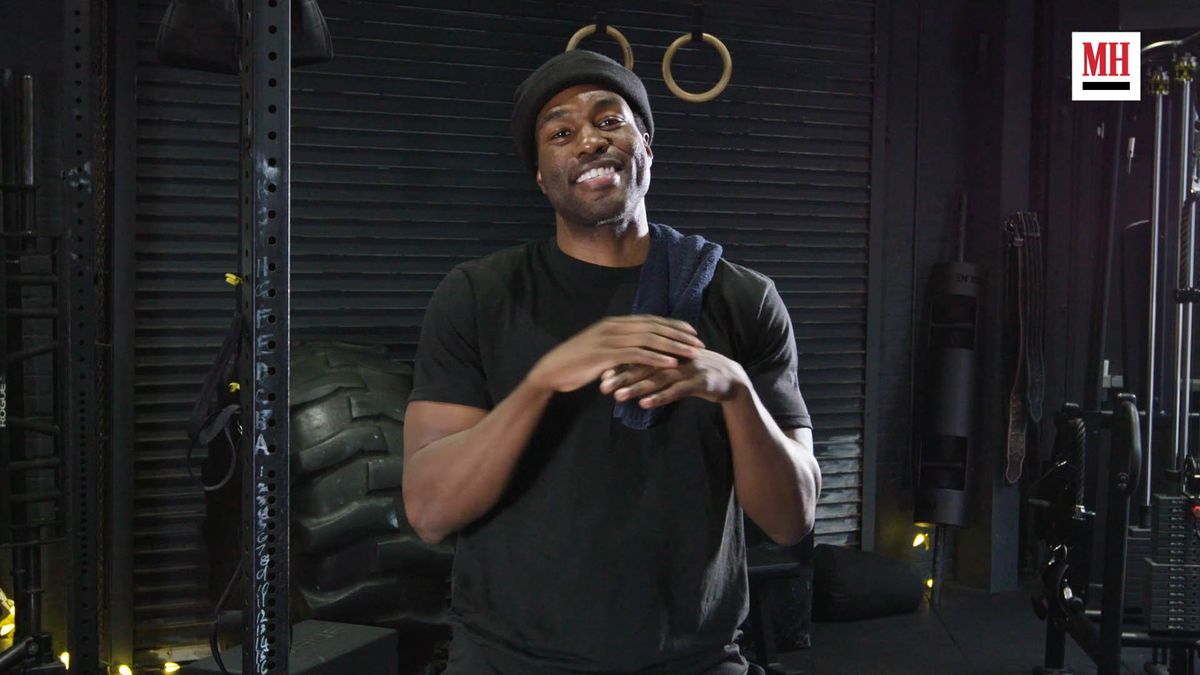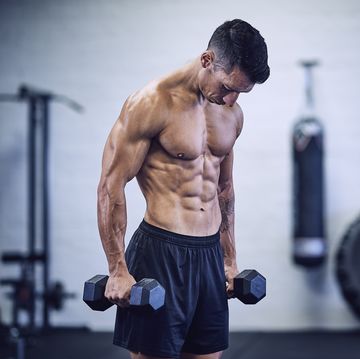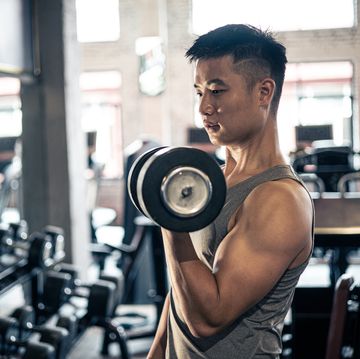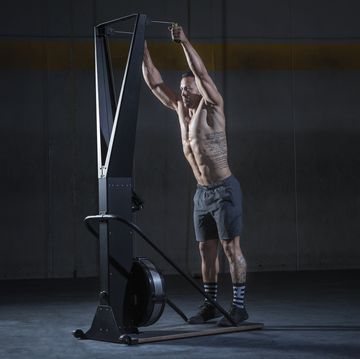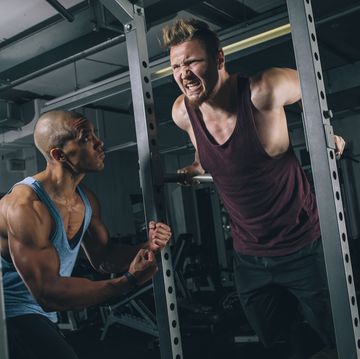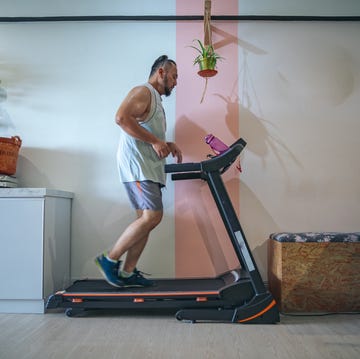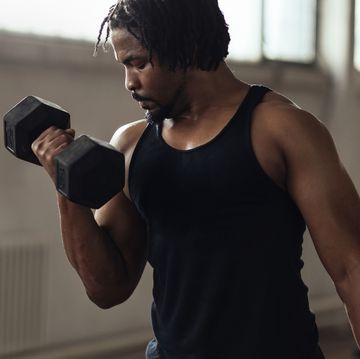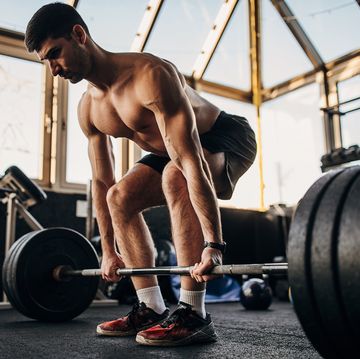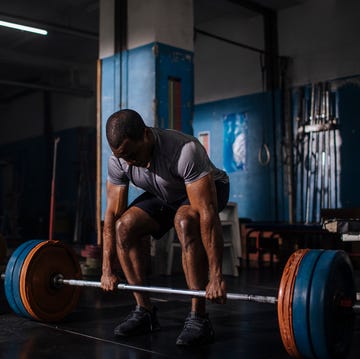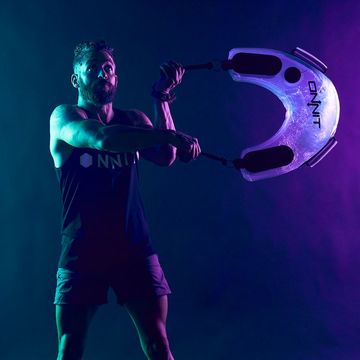This is Your Quick Training Tip, a chance to learn how to work smarter in just a few moments so you can get right to your workout.
Most people wouldn’t snowboard in cycling shoes or rock climb in surfing booties, but glance around the weight room in many big box gyms and you’ll see the majority of folks lifting in running shoes (and in some ridiculous cases, work boots). In all these scenarios, the consequences of using the wrong footwear for the job are the same: A decrease in performance and an increase in injury risk.
In the case of strength training in running shoes, the problem comes from the raised heel. Unlike four-legged animals, us bipeds didn’t evolve to stand or move about solely on the balls of our feet. We’re strongest, most powerful, and most stable when our entire foot is aligned, so when you elevate your heel above your toes, both your ankle mobility and overall stability take a hit.
That’s why “zero-drop” shoes can make such a difference in the gym. In shoe parlance, “drop” refers to the angle between your heel and your toes, so zero-drop shoes have just that—zero angle. Your heels and toes are level, just like they would be if you were hoofing around in bare feet (which is also an option, in the right conditions). Zero-drops take some getting used to if your feet and legs are conditioned to raised-heel shoes, but many people who switch notice a boost in performance right away, especially in exercises that require good ankle mobility, such as the squat. (For multi-joint Olympic lifts like cleans and snatches, though, you'll want an even firmer raised platform to help you keep the proper upright posture, so opt for weightlifting shoes if possible.)
Your move: If you’re still lifting in running shoes or basketball kicks, ditch them for “training shoes,” which is the common name for zero-drop shoes that are specifically designed for strength training—or the favorite shoe of powerlifters, the Converse Chuck Taylor, which has a small drop. If you’re someone who also likes to pound the pavement, you might also consider switching to cushioned zero-drop running shoes, which many elite coaches and athletes believe can help restore natural running mechanics and ultimately reduce the risk of injury, although science has yet to bear out those claims.
Zero-drop running shoes typically require a longer adjustment period than training shoes, so if you decide to go that route, don’t commit to them entirely right away. Keep your traditional raised-heel running shoes for a while, alternating between them and your new zero-drops each workout for a few months until your body adjusts. And if that doesn’t happen (i.e., your zero-drops just never start to feel comfortable), don’t force the issue—every body is different, and if yours prefers a slightly raised heel, run with it.

